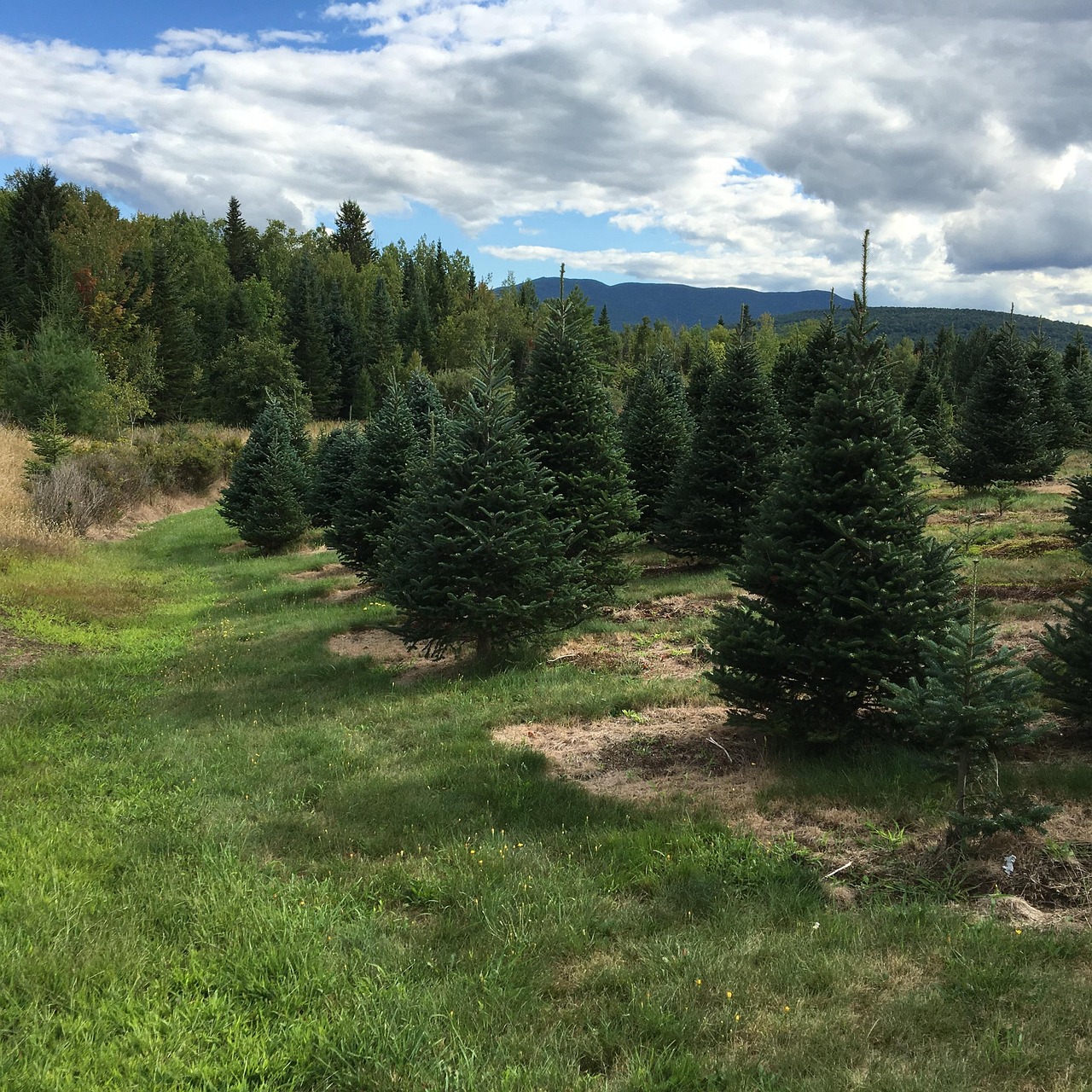Balsam fir trees are primarily used for timber, Christmas trees, and ornamental landscaping. Their resin is also harvested for products like essential oils and natural remedies. Additionally, these trees play a significant role in wildlife habitats and forest ecosystems.
Introduction to Balsam Fir Trees
Balsam fir trees, scientifically known as Abies balsamea, are evergreen conifers native to North America. They thrive in cold climates, particularly in the northeastern United States and Canada. These trees are characterized by their straight trunks, dense foliage, and distinctive fragrance. Their height typically ranges from 40 to 70 feet, making them a prominent feature in many forests.

The balsam fir is known for its versatility and numerous uses. From providing shelter and food for wildlife to being a source of valuable timber, these trees have a significant impact on both the environment and the economy. Understanding what these trees are used for can help appreciate their importance in various sectors.
Timber Production
One of the primary uses of balsam fir trees is in timber production. The wood from these trees is lightweight yet strong, making it suitable for various construction purposes. It is often used in the production of:
- Lumber for framing houses
- Furniture and cabinetry
- Plywood and paper products
- Musical instruments, especially for soundboards
The wood’s natural resistance to decay adds to its appeal in outdoor applications, such as decking and fencing. Additionally, balsam fir timber is appreciated for its aesthetic qualities, making it a popular choice among builders and manufacturers.

Christmas Trees
Balsam fir trees are one of the most popular species for Christmas trees. Their strong branches can support heavy ornaments, and their pleasant aroma enhances the holiday spirit. They also retain their needles longer than many other types of Christmas trees, making them a favorite among consumers.
The market for balsam fir Christmas trees has expanded significantly over the years. In addition to being sold at tree lots during the holiday season, many people now choose to visit tree farms where they can cut their own tree. This experience has become a cherished tradition for families across North America.
Ornamental Use
Beyond their use as Christmas trees, balsam firs are also planted as ornamental trees in gardens and parks. Their attractive appearance and ability to thrive in various soil types make them ideal for landscaping. Some key benefits of using balsam firs ornamentally include:

- Providing year-round greenery
- Attracting wildlife, such as birds and small mammals
- Serving as natural windbreaks or privacy screens
Environmental Impact
Balsam firs play a significant role in forest ecosystems. They provide habitat and food for various wildlife species, including birds, deer, and small mammals. The dense foliage offers shelter from predators and harsh weather conditions.
The trees also contribute to carbon sequestration, helping to mitigate climate change by absorbing carbon dioxide from the atmosphere. Their presence in forests supports biodiversity and promotes healthy ecosystems.
| Benefit | Description |
|---|---|
| Wildlife Habitat | Balsam firs provide shelter and food for many animals. |
| Carbon Sequestration | These trees absorb CO2, helping reduce greenhouse gases. |
| Aesthetic Value | Their shape and color enhance landscapes and gardens. |
The diverse uses of balsam fir trees highlight their significance in both ecological and economic contexts. As we explore further, we will delve into additional uses and products derived from these remarkable trees.
Resin and Essential Oils
Balsam fir trees are well-known for their resin, which is harvested for various uses. This sticky substance has been valued for centuries due to its aromatic properties and potential health benefits. The resin can be processed into essential oils that are popular in aromatherapy and natural remedies.

The extraction of balsam fir resin involves making incisions in the bark, allowing the sap to flow out. This sap is collected and can be further distilled to produce essential oil. Some of the key uses of balsam fir resin and its essential oils include:
- Aromatherapy: The essential oil of balsam fir is often used in diffusers to promote relaxation and reduce stress.
- Topical Applications: It may be used in ointments and balms for its soothing properties, particularly for muscle aches and skin irritations.
- Insect Repellent: The resin has natural insect-repelling properties, making it useful in natural pest control products.
Medicinal Uses
Balsam fir trees have a long history of medicinal applications, particularly among Indigenous peoples of North America. Various parts of the tree, including the needles and bark, have been utilized for their health benefits. Some common medicinal uses include:
- Respiratory Ailments: Balsam fir tea made from the needles is believed to help alleviate symptoms of coughs and colds.
- Anti-inflammatory Effects: The bark and resin contain compounds that may help reduce inflammation in the body.
- Wound Healing: Traditionally, balsam fir resin has been applied to cuts and scrapes to promote healing.
While many of these medicinal uses are rooted in traditional practices, modern research continues to explore their effectiveness and potential applications in contemporary herbal medicine.
Crafting and Artistic Uses
The wood from balsam fir trees is not only practical but also lends itself well to artistic endeavors. Its fine grain and light weight make it a favorite among artisans and crafters. Here are some notable crafting uses:
- Carving: Balsam fir wood is often used for carving intricate designs, such as figurines or decorative items.
- Model Making: Due to its lightweight nature, this wood is ideal for model airplanes and architectural models.
- Musical Instruments: The wood’s acoustic properties make it suitable for crafting instruments like guitars and violins.
Ecological Contributions
Balsam fir trees play a vital role in maintaining ecosystem balance. Beyond their immediate benefits to wildlife and humans, they contribute significantly to forest health. Some ecological contributions include:
- Soil Stabilization: The root systems of balsam firs help prevent soil erosion, particularly on slopes and in mountainous regions.
- Water Regulation: These trees contribute to the hydrological cycle by absorbing water and releasing it slowly into the environment, thus maintaining moisture levels.
- Biodiversity Support: Balsam fir forests support a wide range of plant and animal species, contributing to overall biodiversity.
Economic Impact
The economic value of balsam fir trees extends beyond timber and ornamental uses. Their contribution to local economies can be substantial, particularly in regions where forestry is a primary industry. Key aspects of this economic impact include:
| Sector | Description |
|---|---|
| Forestry Industry | Balsam firs provide jobs in logging, processing, and distribution. |
| Tourism | Tree farms attract visitors for Christmas tree cutting and outdoor activities. |
| Herbal Products | The market for balsam fir essential oils and medicinal products continues to grow. |
The diverse applications of balsam fir trees highlight their integral role in both the environment and economy. As we continue exploring this topic, we will delve into how these trees interact with local communities and culture.
Cultural Significance of Balsam Fir Trees
Balsam fir trees hold a unique place in the cultural heritage of various communities, particularly among Indigenous peoples of North America. These trees are not only valued for their practical uses but also for their symbolic meanings and roles in cultural practices.
The significance of balsam fir trees can be observed in several ways:
- Traditional Uses: Many Indigenous cultures utilize balsam fir for medicinal purposes and as a material for crafting tools and shelter.
- Spiritual Symbolism: Balsam firs are often associated with healing and protection. They are sometimes used in rituals and ceremonies to promote well-being.
- Seasonal Celebrations: The use of balsam fir as a Christmas tree has become a cherished tradition in many households, symbolizing joy and festivity during the holiday season.
Landscaping and Urban Forestry
Balsam fir trees are popular choices for landscaping due to their aesthetic appeal and adaptability. They are often planted in urban areas to enhance green spaces and improve air quality. Some of the benefits of using balsam fir in landscaping include:
- Shade Provision: Their dense foliage provides ample shade, making them ideal for parks and gardens.
- Wildlife Attraction: These trees attract various bird species, making them valuable for urban biodiversity.
- Noise Reduction: Balsam firs can help reduce noise pollution in urban settings due to their thick branches.
Furthermore, urban forestry initiatives often include balsam fir trees to promote environmental sustainability. Their ability to sequester carbon contributes to healthier urban ecosystems.
Research and Conservation Efforts
The ecological importance of balsam fir trees has led to various research and conservation efforts aimed at preserving their populations. Researchers study these trees to understand their role in forest dynamics and climate adaptation. Key areas of focus include:
- Pest Resistance: Research is underway to identify the genetic traits that make balsam firs resilient against pests and diseases.
- Climate Change Adaptation: Studies examine how balsam firs respond to changing environmental conditions, such as temperature fluctuations and altered precipitation patterns.
- Habitat Restoration: Conservation programs often involve planting balsam firs to restore degraded habitats and promote biodiversity.
The Role of Balsam Fir in the Timber Market
The timber market greatly benefits from the harvesting of balsam fir trees. Their wood is highly sought after, contributing significantly to both local and national economies. Some important aspects of this role include:
- Sustainable Forestry Practices: Many timber companies engage in sustainable harvesting techniques to ensure that balsam fir populations remain healthy and viable for future generations.
- Market Demand: The demand for balsam fir wood has led to the establishment of regulated harvesting practices, ensuring a balance between economic gain and environmental health.
- Export Opportunities: Balsam fir timber is exported to various countries, helping to support international trade and economic growth.
Challenges Facing Balsam Fir Trees
Despite their many benefits, balsam fir trees face several challenges that threaten their populations. Awareness of these issues is crucial for effective conservation efforts. Some key challenges include:
- Pest Infestations: Balsam firs are susceptible to pests such as the spruce budworm, which can cause significant defoliation and weakness in trees.
- Disease Outbreaks: Fungal diseases can also affect balsam fir health, leading to tree decline or mortality.
- Climate Change Impacts: Changes in climate can alter the natural habitat of balsam firs, affecting their growth and reproduction.
Understanding these challenges is essential for developing strategies that can mitigate risks and support the sustainability of balsam fir populations. Continued research and community engagement are vital components in addressing these issues effectively.
Future Prospects for Balsam Fir Trees
The future of balsam fir trees is tied closely to our ability to address the challenges they face. With ongoing research and adaptive management strategies, there is potential for these trees to thrive in changing environments. Several initiatives can help bolster the resilience of balsam fir populations:
- Research and Development: Continued studies on pest resistance, disease management, and climate adaptability will provide insights necessary for the conservation of balsam firs.
- Community Involvement: Engaging local communities in conservation efforts can foster a sense of stewardship. Programs that educate the public about the importance of balsam firs can lead to greater support for sustainable practices.
- Policy and Regulation: Implementing policies that promote sustainable forestry and protect natural habitats will be crucial. Legislation aimed at conserving forests can help ensure that balsam fir populations remain viable.
Additionally, the promotion of balsam fir products, such as essential oils and sustainably harvested timber, can create economic incentives for conservation. When communities see tangible benefits from healthy forests, they are more likely to engage in sustainable practices.
Conservation Strategies
To effectively conserve balsam fir trees, a multi-faceted approach is needed. Some strategies that could be implemented include:
- Monitoring Programs: Establishing monitoring systems to track the health of balsam fir populations can help detect early signs of pest infestations or diseases.
- Restoration Projects: Initiatives aimed at restoring degraded habitats can encourage the growth of balsam firs alongside other native species, enhancing biodiversity.
- Public Awareness Campaigns: Raising awareness about the ecological and economic importance of balsam firs can encourage responsible behaviors among consumers and landowners.
Such strategies not only support the trees themselves but also contribute to overall forest health and resilience, ensuring that balsam firs continue to thrive for future generations.
Final Thoughts
Balsam fir trees are much more than just a source of timber or holiday decorations; they are vital components of forest ecosystems and cultural heritage. Their various uses, from timber to medicinal applications, demonstrate their importance in both economic and ecological contexts. However, challenges like pest infestations, diseases, and climate change threaten their sustainability.
By investing in research, community engagement, and sustainable practices, we can create a future where balsam fir trees continue to flourish. The ongoing dialogue about their significance will help promote conservation efforts and ensure that these majestic trees remain a part of our landscapes for generations to come.
As we recognize the value of balsam firs, it becomes essential to take an active role in their preservation. Understanding their uses and addressing the challenges they face will not only benefit these trees but also enhance our connection to nature and the environment around us.
